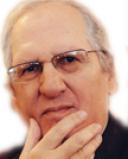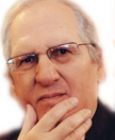Personality
Masks of Sanity: Detecting Disguised Personality Disorders (Part Two)
Masks of Sanity: Detecting Disguised Personality Disorders (Part Two)
Posted May 25, 2009
In Illinois this month, a thirty-two-year-old mother and her two young sons were strangled to death by ligature in their own beds as they slept. On a bedroom wall were scrawled angry epithets, one reported to say "I told you this would happen." Police have now arrested the husband and father, Christopher Coleman, an apparently high-functioning, former Marine military police officer and minister's son, who publicly gives the impression of being clean-cut, calm and collected. Coleman served as head of security for religious televangelist Joyce Meyer. But apparently hiding beneath the Norman Rockwell-esque facade of his marriage and spiritual persona, evil lurked. It is alleged that Mr. Coleman, who had been carrying on a clandestine affair in Florida with a former highschool friend of his missionary wife, callously murdered his defenseless family with premeditation and malice.
In another disturbing case, former police officer Drew Peterson (left) has now been officially charged with murdering his third wife, Kathleen Savio. Prosecutors claim that, trying to avoid the financial devastation of a divorce, Peterson wanted to hire a hit man to murder Kathleen, but finally did the evil deed himself. His fourth wife, Stacy, whom the fifty-four-year-old Peterson married when she was only eighteen, disappeared under extremely mysterious circumstances two years ago, and has never been heard from since. This week, however, a dismembered and badly deteriorated female torso was found floating in a local river, not far from a blue plastic barrel. The head and arms were missing, making fingerprint or dental identification impossible. Peterson's brother-in-law told police some time ago he had helped Peterson move such a blue barrel from his home around the time of Stacy's disappearance. Peterson consistently denies any responsibility for what happened to either woman, and, despite being indicted, incarcerated and placed on twenty-million dollars bail, appeared completely composed, calm, confident and even cheerful, cracking jokes with the press as he was being led away in shackles and handcuffs. If Peterson, presumed innocent till proven guilty under the law, turns out to have committed these evil deeds, how can he and other criminal defendants like Philip Markoff, Christopher Coleman or Casey Anthony (if convicted), appear so convincingly sane, seem so innocent, and keep so incredibly cool?
I cannot psychologically evaluate someone from afar and have no specific diagnostic knowledge about any of these particular defendants. But drawing on my experience as a forensic criminal psychologist, one possible explanation for such baffling behavior that must always be considered is the presence of a latent personality disorder. (See Part One.) In rising numbers of similar defendants, a hybrid diagnosis of Antisocial/Narcissistic Personality--not necessarily meeting the complete criteria for either one, but together forming a deceptively deadly character disorder-- may be warranted. Utilizing the DSM-IV-TR, such defendants might typically be diagnosed as suffering from Antisocial Personality Disorder with Narcissistic Traits, or Narcissistic Personality Disorder with Antisocial Traits. Additional Axis l mental disorders (e.g., Depressive Disorder, Bipolar Disorder, Psychotic Disorder, Substance Abuse or Dependence, Cognitive Disorder, etc.) may also be present in some cases.
The primary difference between narcissistic and antisocial personality disorder is one of degree. Pathological narcissism often includes antisocial traits. Sociopathy typically demonstrates narcissistic tendencies. The diagnostic boundary between these two contiguous personality disorders is blurry. Psychoanalyst Otto Kernberg sees certain destructively aggressive patients manifesting combined traits of narcissistic, paranoid and antisocial personality as reflecting what he terms a "malignant narcissism" syndrome. (Dr. Kernberg borrows this diagnostic term, also employed by psychiatrist M. Scott Peck to describe evil individuals, from psychologist Erich Fromm.) It has been suggested and substantiated by research that those suffering from antisocial personality disorder--particularly what is called "primary psychopathy"--seek extraordinary levels of stimulation and seem not to learn from experience. It is as if they are addicted to adrenaline, possibly to counteract an underlying chronic depression or to feel anything at all, and so out of touch with their emotions that even normally painful experiences, such as prison time, seem not to deter their bad behavior.
I would argue that antisocial personality disorder represents pathological narcissism in its most extreme and destructive form. A sense of narcissistic entitlement is characteristic of both narcissistic and antisocial personality disorder. In the case of antisocial personality disorder, deceitful, manipulative, destructive and aggressive behavior serves the subconscious purpose of causing others to experience the same feelings of fear, rejection, victimization, hurt, terror, abandonment and betrayal as did the perpetrator during his or her own childhood. The rapist, stalker, serial killer: Judging by their behavior, each of these criminals ostensibly shares a conscious belief that they have the absolute right to thrust themselves uninvited into peoples lives and to selfishly exploit others for their own narcissistic ends. But, in reality, this perception presumes a degree of conscious awareness which in most cases is simply not present. They do, however, share in common a distinct lack of empathy with their fellow man, being unwilling or unable to feel compassion toward, nor identify with, the emotions and needs of others. Such grossly inhumane, even monstrous attitudes and actions stem mainly from a combination of compensatory grandiosity and a schizoid-like detachment from their own feelings.
Antisocial Personality Disorder--also referred to as sociopathy, psychopathy or dyssocial personality --generally involves, since childhood, a chronic and pathological anger, rage and resentment toward others. As I have suggested elsewhere (see previous post), antisocial personality disorder is, at its core, an anger disorder. Sociopathy centers around a deep-seated hostility toward family, culture, world, destiny, fate, God, reality, and indeed, toward life itself. But the dyssocial personality is highly proficient at masking this underlying and largely unconscious hostility and hatred. They are masterful actors, having honed and practiced their skills since early childhood. Like the narcissistic personality disorder, they have learned to conceal their deeply wounded true selves behind what Winnicott called a "false self." What the world sees in such badly damaged and dangerous individuals is an extremely rigid defensive persona, to employ Jung's pragmatic term, which originates from the dramatic masks worn by stage actors in the ancient Greek theatre. A carefully constructed and meticulously maintained false self, behind which the raging, wounded, depressed true self lies. For example, Drew Peterson has been reportedly described by former girlfriends and wives as extremely controlling, possessive and jealous, at times spying on them and reacting angrily and abusively to any actual or imagined abandonment, betrayal or rejection.
It has long been assumed that the antisocial personality--the psychopath--subsequent to having committed a crime, has no real sense of conscience or guilt, owing perhaps to some genetic anomalie or insufficient superego. In defendants like Drew Peterson, Chris Coleman, Phil Markoff or Casey Anthony, to many pundits, this appears to be the case. But I would suggest that the sociopathic conscience is--like the deeper feelings belonging to their long-denied and dissociated true self--still present, but frozen deep beneath the thick, cold ice of the defensive false self. This is why some defendants seem so unperturbed about their evil deeds and the disastrous negative consequences. It is precisely what makes them such charming, charismatic and diabolically convincing con artists, manipulators and liars. And, in some cases, cold-blooded killers.
How can such exceptional liars be detected? How can these superbly skilled actors be unmasked? Even highly trained and experienced forensic psychologists and psychiatrists are sometimes taken in and fooled by these impressive individuals, some of whom can even fool a polygraph examination. In forensic psychology, we have various methods and tests to detect deception or malingering. But clinically, most telling to the seasoned forensic evaluator is discerning the presence of a long-standing pattern (since childhood or adolescence) of deceptiveness, impulsivity, manipulation, irresponsibility, and selfish disregard for (if not outright violation of) others' rights, needs and feelings without remorse, frequently taking the form of unlawful behavior commonly (but not always) leading to arrests. Some manage to consistently outwit the law. But in most (though not all) cases, even these clever criminals slip up or get too cocky, eventually resulting in detection and incarceration.
Personality disorders are chronic conditions, and don't just suddenly appear one day out of the blue. They are deeply rooted ways of being in the world. Which is why the next time you meet that charming, charismatic, kind, generous, seemingly perfect person, it might make sense to slow down, check out his or her history, and peer behind the mask before leaping into any financial, professional or romantic relationship. There's an old saying: If it seems too good to be true, it probably is. Sure, we all wear masks. We need a persona for normal social functioning. But the slicker and more superficially polished the persona, the more risk there is that darkness--like Dr. Jekyll's demonic Mr. Hyde--lurks beneath the seductive, shiny surface. And the more difficult it is to see through the facade. M. Scott Peck (1983) called such habitually deceptive, treacherous individuals "people of the lie." Evil, like the devil, can assume a pleasing form, making it doubly dangerous. This is what gives diabolical characters like Hitler, Manson, Ted Bundy, or possibly accused killers Philip Markoff, Casey Anthony, Chris Coleman and Drew Peterson the uncanny power to do what they do. Our naive inability or unwillingness to perceive disguised evil is precisely what such severely pathological personalities prey upon.
Parts of this posting are excerpted or derived from my previously published article titled "Violence as Secular Evil: Forensic Evaluation and Treatment of Violent Offenders from the Viewpoint of Existential Depth Psychology," Journal of Applied Psychoanalytic Studies, Vol. 5, No. 1. January 2003.
.




